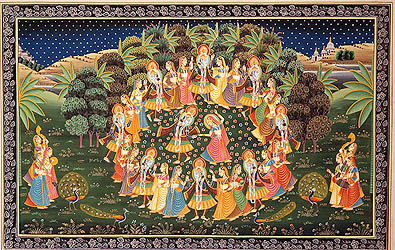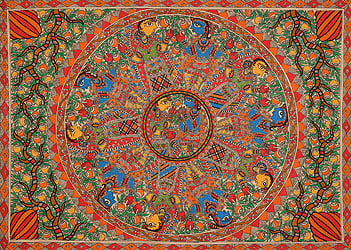Lord Soorya is worshipped as the prime wellspring of life and sustenance by the people groups of the subcontinent. His numerous names incorporate Vivasvat (Sanskrit word for 'splendid'), Savitra ('nourisher'), and Lokachakshu ('eye of the domain'). Legend has it that He rides a chariot as splendid as He may be, drawn by no under seven ponies, over the skies every day in His offer to overwhelm the devils of haziness. He is one of the most astounding request gods of Hinduism, and a lesser-known god in Buddhism. This sculpture of the exceptionally worshiped Deva delineates Him with His typical two hands, situated in padmasana in His chariot. In every one of His hands is a lotus, a picture of the sun itself establishing the radiance behind His transcending crown. Situated before the luxuriously engraved compartment of the chariot, with the reins of all the seven steeds in His grasp, is Aruna, the charioteer of Soorya.
Destined to Kashyapa (a Vedic rishee) and Aditi (who is the superb mother-figure), He is sung about in the Rigveda. Samja, the girl of Vishvakarma, is His significant other, and He is the dad of Manu, Yama, and Yami. It is from pieces of His radiant fabulousness that the mark weapons of the different devas (the trishool of Shiva, the disk of Vishnu, and the spear of Karttikeya) have been molded. Justifiably, He is the head of the lords of the individual planets in the nearby planetary group. Having been to some degree supplanted by the Brahma-Vishnu-Shiva trinity regarding significance, He is the picked god of love amid new-year merriments in Nepal and in the South. This sculpture of the chariot-borne Soorya is loaded with the quality elucidated idyllically in the most seasoned of the Vedas.
Destined to Kashyapa (a Vedic rishee) and Aditi (who is the superb mother-figure), He is sung about in the Rigveda. Samja, the girl of Vishvakarma, is His significant other, and He is the dad of Manu, Yama, and Yami. It is from pieces of His radiant fabulousness that the mark weapons of the different devas (the trishool of Shiva, the disk of Vishnu, and the spear of Karttikeya) have been molded. Justifiably, He is the head of the lords of the individual planets in the nearby planetary group. Having been to some degree supplanted by the Brahma-Vishnu-Shiva trinity regarding significance, He is the picked god of love amid new-year merriments in Nepal and in the South. This sculpture of the chariot-borne Soorya is loaded with the quality elucidated idyllically in the most seasoned of the Vedas.










